Jeepneys have been a part of the Filipino culture for many years. These artsy four-wheeled vehicles are what Filipinos are known for. Many citizens prefer jeepneys because it is the cheapest way to commute around the country.
The fare depending on the destination usually ranges from 8 pesos to 16 pesos. With an open rear door design, both the driver and the commuters can easily get in and get off the vehicle.
Unlike buses, jeepneys can stop anywhere. Although it is well loved by many because of its beautiful, creative designs and cheap fare rates, there are also problems that passengers have to go through on a daily basis. In this article, Philkotse.com will cover the common issues drivers might face when riding a jeepney in the Philippines.
1. Jeepneys are not safe at all
Most Jeepneys do not have doors, they just have bar handles. This makes the riders prone to accidents. Since many different types of people commute in this vehicle, it has become a primary target of snatchers and thieves.
When riding one, you have to be alert and not keep your guard down, or else someone from out of nowhere might just pull off your jewelry or maybe even snatch your bag. This is a typical scenario in daily jeepney rides mainly in the metro.
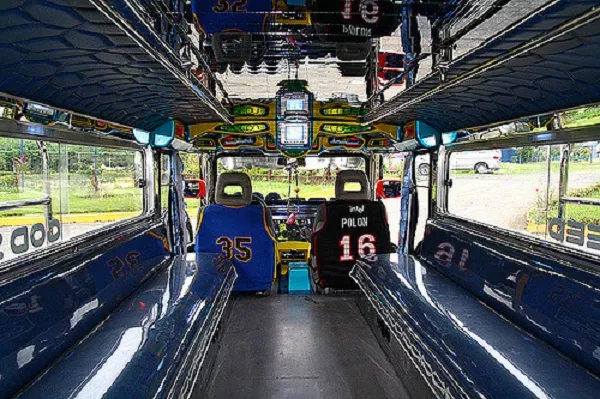
Most Jeepneys do not have doors, they just have bar handles.
2. Passengers are obliged to be friendly
"Bayad po!” a line that you hear whenever you are inside the jeepney. Being nice is an expectation. Whether you are in a good mood or not, busy checking essential text messages on your phone or just really having a moment to think about your life during the ride.
You have no choice but to stop whatever you are doing and pass the fare to the driver especially when you happen to choose the sit nearest to him. Now that’s something you can't say no to.
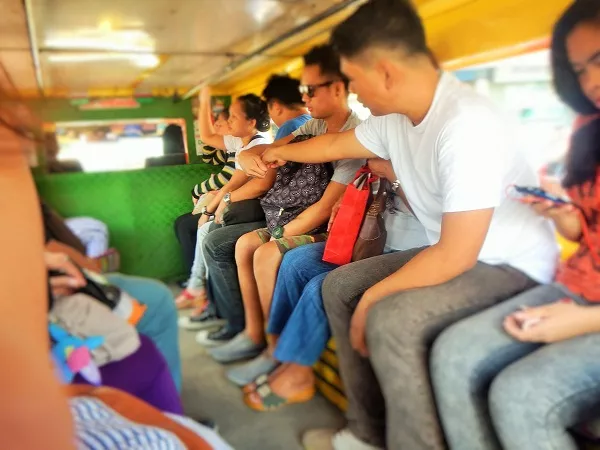
"Bayad po!” a line that you hear whenever you are inside the jeepney.
3. Exposure to the “crazy ones”
A person performing perverted acts, a drunken passenger who made a scene inside the vehicle; you see many incidents like this on social media or on television. Because there are many types of people who use this means of transportation, chances are you get to ride with some crazy ones too. Inside the jeepney, anything can happen.
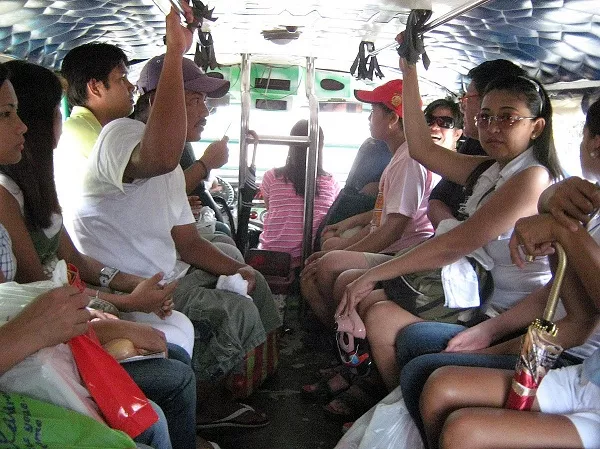
Because there are many types of people who use this means of transportation, chances are you get to ride with some crazy ones too.
4. Uncomfortable seating
There are jeepney drivers who want to make sure that all 20 seats are filled before they start the route. This is reasonable in a way since they want to be able to earn more, but it makes many commuters uncomfortable too.
We are not all of the same sizes. Some passengers tend to be bigger than the others. Long story short, due to the driver’s persistent demand to complete all 20 seats, it’s likely that you may be squished in between two persons or hardly ever sits at all.
This can be an awful situation when you are half-sized, and the person sitting next to you provides free body aromatherapy.
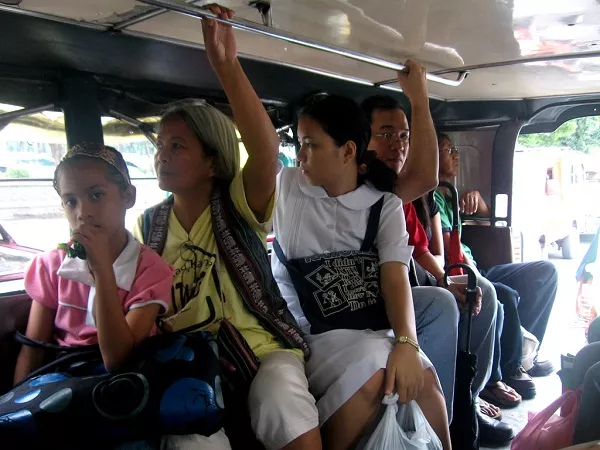
Due to the driver’s persistent demand to complete all 20 seats, it’s likely that you may be squished in between two persons or hardly ever sits at all.
5. Literally being Kings of the road
Jeepneys are also known as the "hari ng daan" (translate: King of the Road) because most of the drivers violate traffic regulations. They do not mind red and green lights at all. Because of this, it’s not surprising why there are multiple accidents involving these vehicles.
Back in 2017, 10,163 cases were noted by the Metropolitan Manila Development Authority’s Metro Manila Accident Recording and Analysis System. This cases specifically involved Jeepneys. Records show that nine drivers were killed while 682 others were hurt.
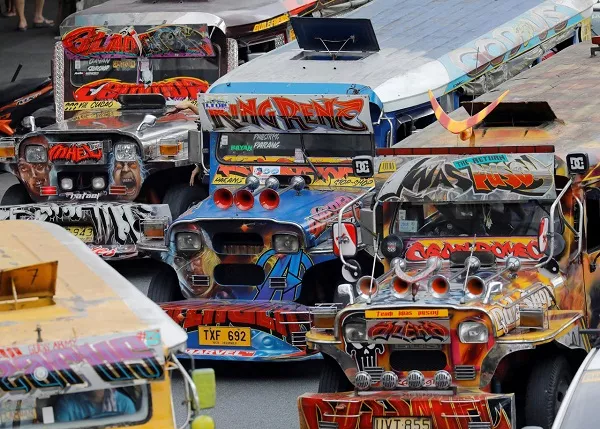
Jeepneys are also known as the "hari ng daan" (translate: King of the Road)
6. Bad for Mother Earth
The current jeepney models are definitely not environmentally friendly. These diesel-powered vehicles are dubbed as the primary source of pollution in cities. The black carbon that they emit contributes to the problematic climate change and also puts people’s health at risk.
What can we expect in the future?
There might still be hope. The transportation department launched a public utility vehicle modernization program last June 2017. The Malacañang believes that it will benefit everyone – drivers, operators, and commuters. An estimated P16 billion budget will be spent for this purpose.
Based on their data, there are about 200,000 jeepneys that are 15 years old or older. They aim to replace them with new modern, safe, environment-friendly and fuel-efficient vehicles. Once implemented, only two types of jeepneys will be used: Electric Jeeps and the Euro-4 compliant ones.
The government plans to release up to 250, 000 of these modernized jeepneys. Excluding "Manong Driver" these new models can seat around 20 to 22 passengers. The Automatic Fare Collection System (AFCS) will put an end to the annoying "Paabot" system that we have grown used to.
To address safety issues, the new units will have CCTVs and GPS installed. There will also be free Wi-Fi for passengers. Drivers will be entitled to employment benefits and will also receive regular pay. Training will also be conducted so they can become more responsible on the roads.
Electric future for Philippine Jeepneys
This is not the first attempt to phase out the older models though, the previous administrations also tried to implement this modernization before but failed mainly because of the lack of political will.
They were not able to handle the multiple transport strikes that were conducted by complaining jeepney drivers or owners accusing this program and all who support it are anti-poor.
Many of them oppose this idea because of various reasons. Some disagree on the concept of the loaning system that the government formulated to help drivers avail of the new models.
They will need to pay P800 a day for seven years making the total cost of the vehicle a staggering P1.6 million. They also promised to make interest and equity low. This makes it unappealing to many drivers who cannot earn that much daily.
So far, the Federation of Jeepney Operators and Drivers Association along with other 20 transport groups and cooperatives had announced their full support when this program was launched last year.
Although this seems like a great start, there are still many obstacles that can be foreseen along the way. For example, not all transport groups are currently supporting the program. Right now, we are yet to see if the Duterte administration will succeed in this matter.
>>> Related posts:
Recent posts
- Commuting vs driving in the Philippines: Which is more practical for the long term? Aug 16, 2022
- A Commuter’s Guide to LRT 2 Stations in the Philippines Jul 11, 2022
- Expat’s Guide: LRT 1 Stations in the Philippines Aug 16, 2022
- Only in The Philippines: 5 Public Utility Vehicles That Are Uniquely Pinoy May 27, 2021
- Government officials to commute via public transport once a month Oct 03, 2017












